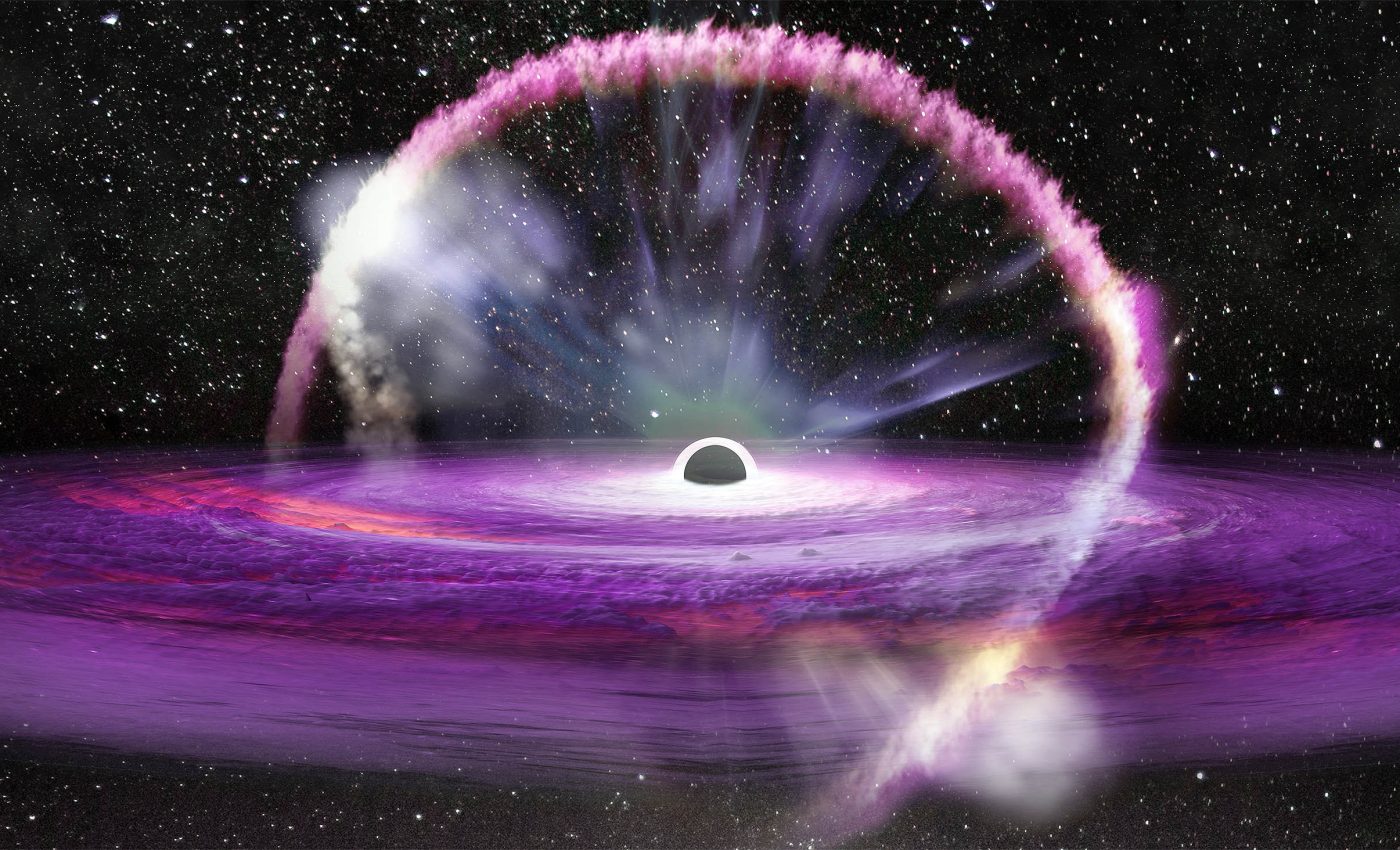
'Ghost particle' detected in Italy may be remnants of a nearby black hole explosion
A single subatomic particle streaked through the Mediterranean Sea off the coast of Sicily on February 13, 2023, and set off thousands of sensors.
The signal pointed to the most energetic cosmic neutrino, or “ghost particle,” ever recorded. Its best estimate is near 220 peta electron volts, far beyond what any collider can achieve.
A new idea from MIT physicists suggests a bold source. They argue that the particle could be debris from a tiny, ancient black hole that finished evaporating in an explosion not too far from our neighborhood.
Ghost particle with enormous energy
Neutrinos slip through matter almost without interacting, so a detection at such energy is rare. The KM3NeT telescope near Sicily reconstructed the particle’s path as nearly horizontal and its energy as off the charts.
If that energy came from a single cosmic accelerator, it strains familiar sources like exploding stars or active galaxies. The event sits beyond the trend measured by previous detectors.
For comparison, IceCube once captured a 6.05 peta electron volt electron antineutrino at the Glashow resonance. That landmark event was already a stretch for known mechanisms.
Primordial black hole explained
Primordial black holes are hypothetical compact objects formed fractions of a second after the Big Bang when density ripples collapsed under gravity. They are much smaller than stellar black holes found after star deaths.
Because of their potential minuscule size, primordial black holes could also be hot, which matters for their long-term behavior.
Hawking radiation is the slow leak of energy predicted for black holes by quantum field theory in curved spacetime.
As a black hole radiates, it loses mass and its temperature climbs, pushing the spectrum to higher energies.
In the final instances, the process runs away. The object flares and vanishes, leaving a burst of particles that can include very energetic neutrinos.
Particles from black hole explosions
A new theoretical analysis shows that if a fraction of dark matter consists of primordial black holes, a small subpopulation would be hitting their last moments today.
The study was led by Alexandra P. Klipfel of MIT’s Department of Physics. The experts computed how many neutrinos a final burst would eject and how often such events should occur in our part of the Milky Way.
The team’s calculations indicate an explosion could plausibly happen close enough, causing a few of its highest-energy neutrinos to potentially reach Earth and trigger a detector.
“We don’t have any hope of detecting Hawking radiation from astrophysical black holes, so if we ever want to see it, the smallest primordial black holes are our best chance,” said Klipfel.
How many black holes may explode?
The model estimated that a typical final outburst would spit out about 10^20 neutrinos near the relevant energies.
It further suggests that roughly 1,000 such black holes would explode per cubic parsec per year locally, with one parsec equal to about 19 trillion miles.
To line up with the KM3NeT event, one outburst could have occurred around 2,000 astronomical units from the Sun, about 186 billion miles, which is well outside Pluto’s path but still within the distant Oort Cloud.
The chance of a nearby event that sends enough ultraenergetic neutrinos toward Earth comes out to several percent across a decade-scale window.
The arithmetic is tight, but not out of reach for a rare event given current exposure. If more of these particles are logged over time, the statistics will sharpen and the picture will either lock in or fade.
Detectors capture important data
KM3NeT did not see the neutrino itself. It saw the trail of a muon created when the neutrino interacted near the instrumented water.
The count of triggered photomultipliers and the event geometry implied a muon energy of roughly 120 peta electron volts, with the neutrino’s energy inferred to be even higher.
That aligns with what an end-stage primordial black hole could produce, according to the MIT team’s emission and transport estimates.
IceCube’s earlier handful of extreme events provides useful context. Those data let researchers set a typical rate for such particles at Earth and also underscore why this single event stands out rather than neatly fitting past trends.
A consistent explanation that joins IceCube’s tail and KM3NeT’s outlier would be valuable for multi-year planning of next-generation arrays.
Dark matter comparison
Dark matter is the unseen mass that shapes galaxies and clusters through gravity. Multiple lines of evidence indicate it makes up about 85 percent of all matter.
If a share of that mass hides in primordial black holes, then their late-life flashes become an astrophysical laboratory.
Observing their products would probe both black hole thermodynamics and the composition of the cosmos. It would also provide a new way to test Hawking’s prediction in the sky rather than in the lab.
A confirmed signal would link quantum physics, gravity, and cosmic structure in one observation. That is a rare opportunity in fundamental physics.
Evidence of a black hole explosion
More detections at ultra-high energy are essential. A cluster of events coming from directions and distances consistent with short-lived sources in the galactic neighborhood would support the black hole burst picture.
Tighter cross-checks with gamma ray and cosmic ray observatories would add weight, or reveal missing partners that argue against a nearby explosion.
The model’s own numbers can be scrutinized as detectors accumulate exposure. If the expected rate of local bursts is off by orders of magnitude, the odds of repeating a similar detection within a human timescale will look different.
Either way, each neutrino at these energies is a data point that trims the space of possibilities.
The study is published in the journal Physical Review Letters.
—–
Like what you read? Subscribe to our newsletter for engaging articles, exclusive content, and the latest updates.
Check us out on EarthSnap, a free app brought to you by Eric Ralls and Earth.com.
—–













